Subitizing is a critical (and often overlooked) skill in early math development. With this article, we’ll teach you what it means to subitize, why and how to teach subitizing, as well as also provide subitizing activities for preschoolers. It’s one step to offering your child a strong foundation in number sense!
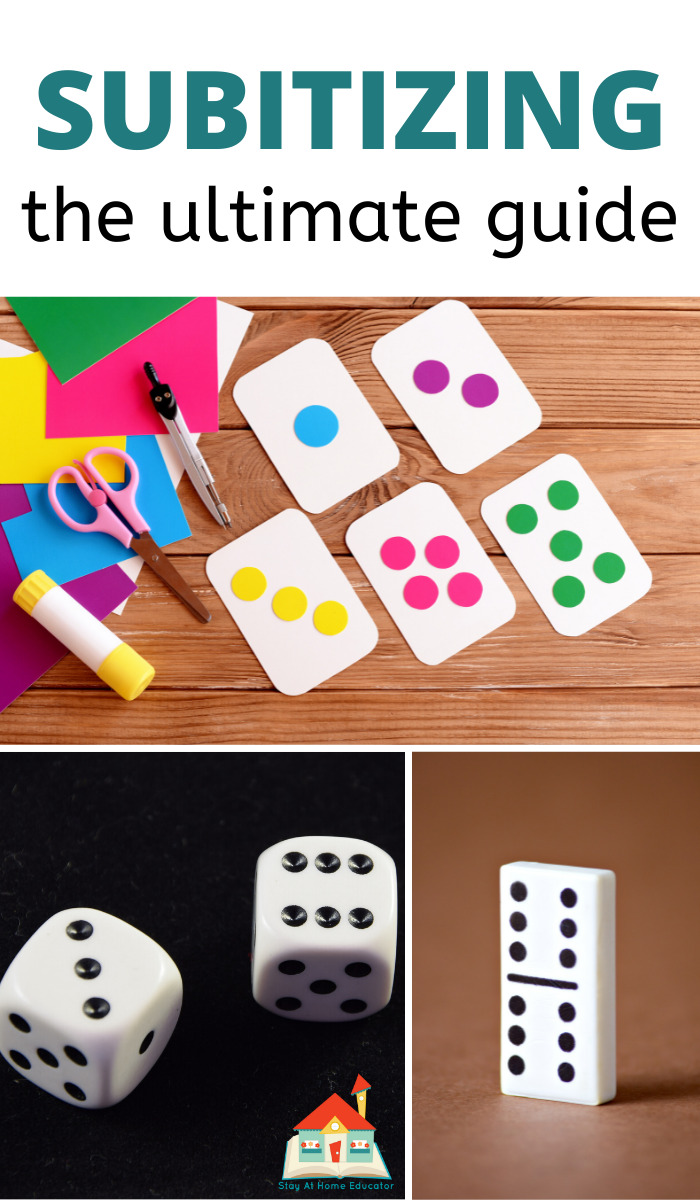
All About Teaching Subitizing to Preschoolers
Have you ever looked at your preschoolers and felt like they were just missing some pieces to the number puzzle?
Subitizing is one way that can help them with this.
You might be wondering what subitizing is or what it means to subitize. Or you might be wondering why it’s important for kids to learn this early math skills! We’ll explain all about it in our article today – come check out how easy mastering these smaller numbers really feels when everything fits together perfectly…
What is Subitizing?
Subitizing is the ability to identify small amounts of items without having count them. It is instant recognition.
Subitizing is like the sight words of mathematical world.
Here are some examples of subitizing — where we instantly see the quantity without having to count first.
- Pips on a die
- Shoes come in pairs
- Cupcakes in a box at the market
- Recognizing tally points
- Wheels on a tricycle
- Animal feet on quadrapeds

Most children do not need to count “one, two, three” to know how many are in a set. Subitizing greater numbers requires seeing clusters within sets. Even practiced adults seldom subitize sets greater than four or five.
Related Reading
Why is Subitizing Important?
Subitizing is a way for children to recognize numbers and their patterns. When we teach kids how to subitize, it helps them become more efficient thinkers when doing math!
Strategic and efficient thinking is something that can be developed early on with toddlers, preschoolers and kindergarten students.
There are a number of advantages involved for students who develop skills in subitizing; such as saving time, developing more complex number and counting skills, as well as improving their ability to deal with more complex number problems into the future
Source
What Research Tells Us About Subitizing and Mathematics Success
Subitizing is sometimes referred to as quantification.
Quantification is the ability to recognize that all numbers are associated with an exact quantity, and the ability to recognize sets of objects, such as pips on a dice.
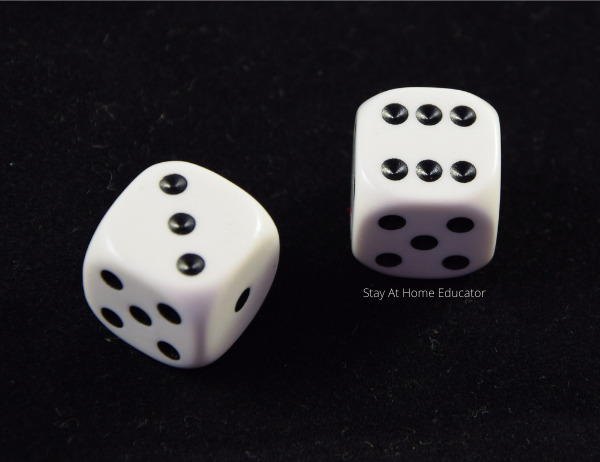
Beginning near the turn of the 19th century, educators began promoting that simply counting did not demonstrate a true understanding of number and its related quantity, but that subitizing did. This was supported by experts who later stated that subitizing focused on the whole of the number as well as its parts in its most basic units. (Remember those “clusters” referred to earlier in this post?)
-
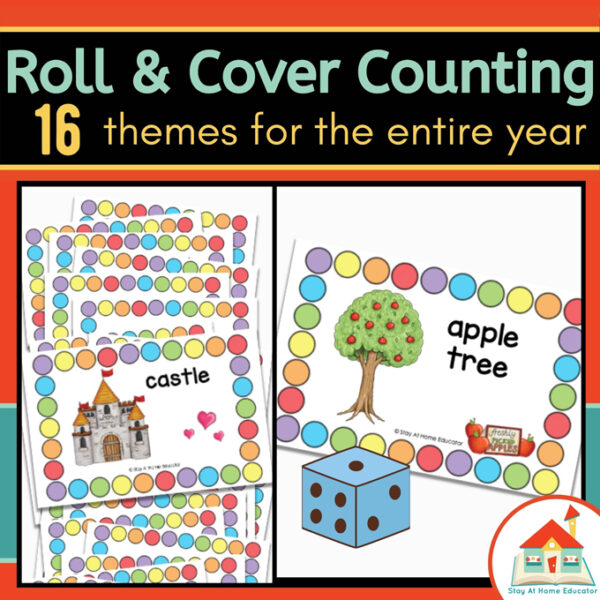 Roll and Cover Counting Mats for the Entire Year$16.00
Roll and Cover Counting Mats for the Entire Year$16.00 -
Product on sale
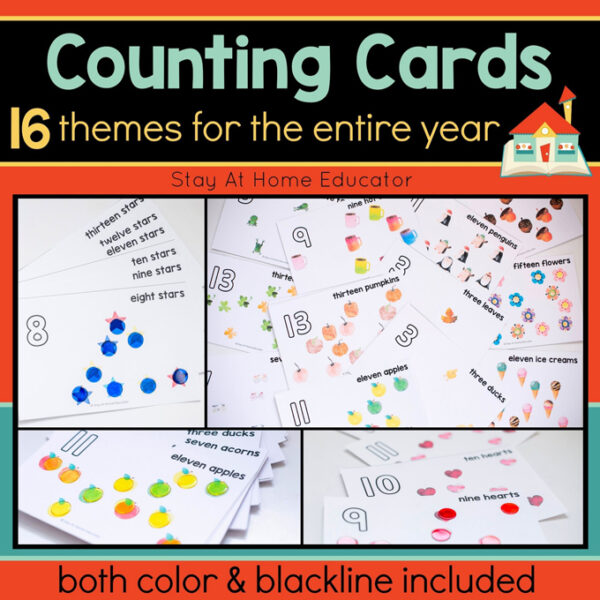 Counting Cards for the Entire Year (16 Themes)Original price was: $16.00.$10.00Current price is: $10.00.
Counting Cards for the Entire Year (16 Themes)Original price was: $16.00.$10.00Current price is: $10.00. -
Product on sale
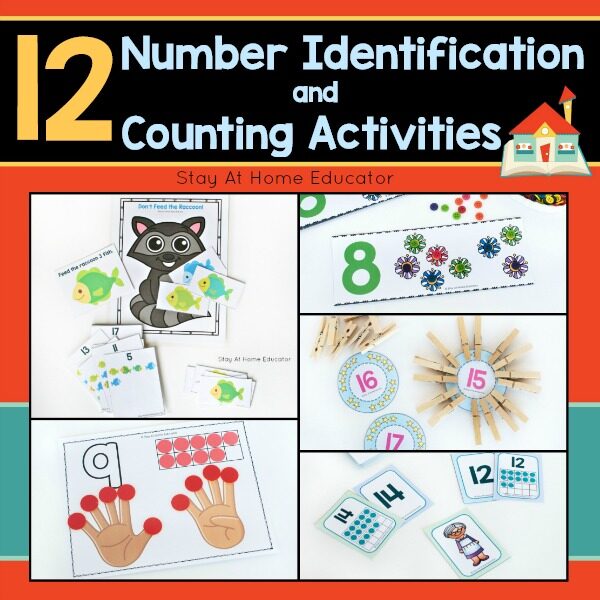 12 Number Identification and Counting ActivitiesOriginal price was: $12.00.$9.00Current price is: $9.00.
12 Number Identification and Counting ActivitiesOriginal price was: $12.00.$9.00Current price is: $9.00.
By the 1970’s, it was expected that most children could naturally subitize because it happened so readily in their natural environment, however that was not, and is not, the case for all children.
Some babies as young as six months, and even birds, have been found to have an ability to subitize. Doug Clements sites the example that a six month old baby may is shown two images at the same time, on of two dots and the other of three dots.
Then, the baby hears three beats on the drum and his eyes move to the image in front of him with the three dots. Obviously, this baby is not literally counting 1-2-3, but discriminating between two quantity sets.
But a counter argument exits that children use subitizing more as a shortcut for counting (Beckwith and Restle 1966; Brownell1928; Silverman and Rose 1980). After repetitive practice students may no longer need the to count the pips on a dice, but can automatically recognize their value, thus demonstrating more of a form of rapid counting.
Researchers are still at odds as to whether or not subitizing is a skills than comes before counting, however it is understood among the educative community that subitizing is something that can be taught and has a positive impact on number sense skills, which is the strongest indicator of mathematical success.
Students can use pattern recognition to discover essential properties of numbers, such as conservation and compensation. They can develop such capabilities as unitizing, counting on, and composing and decomposing numbers, as well as their understanding of arithmetic and place value—all valuable components of number sense.
Source
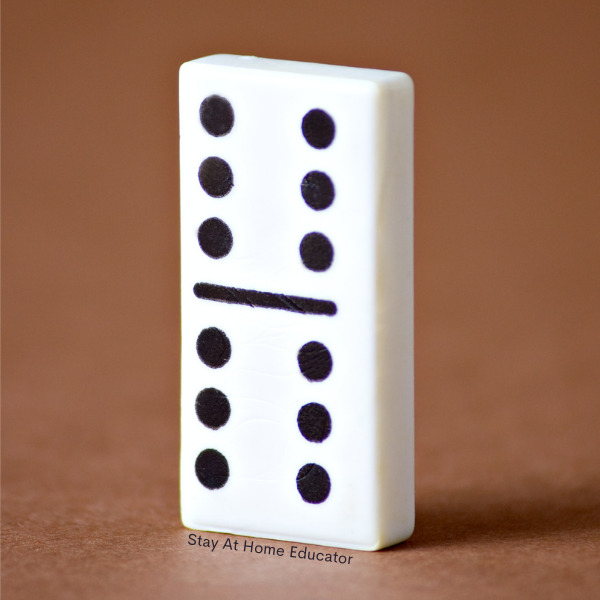
Why Teach Subitizing?
Subitizing can be a great way to improve your student’s math skills in number sense. Here are some of the advantages frequent and repeated practice will give children.
It Saves Time
Subitizing numbers is a skill that saves time through not having to count each individual member of group, but instead by simply perceiving the number immediately. This comes in useful later on when students begin dealing with more complex or mathematical operations (Reys et al., 2012).
It’s a Precursor for More Complex Number Sense Skills
Early number order relations link directly to subitizing skills. A child who is able to competently name small groups will have an easier time understanding number facts such as that 3 > 2 and that 4 is one less than 3. This complex understanding of numbers facilitates learning of other mathematical processes as they go through their schooling.
It Helps Develop More Complex Counting Skills
Students who can subitize small groups of numbers are able to develop their counting skills by beginning their counting after the subitized group. For example, by counting on from the subitized total. Children can then use subitizing to count forwards or backwards by twos, threes, or even larger groups later when they are exposed to more complex multiplication tables. (Reys, et al., 2012)
This type of subitizing falls into the category of conceptual subitizing which occurs with larger number sets, and involves breaking the group into smaller parts (Clements, 1999).
It Makes Addition and Subtraction Easier
When children are able to subitize, it means that they are better equipped to handle addition and subtraction concepts. Children with solid number sense learn that grouping numbers together helps us determine the total, and it’s an introduction to addition!
When children can subitize small sets, they do not have to count each small group to be added or removed when learning operations with manipulatives.
It’s a Life Skill
Much like the importance of being able to calculate estimates, subitizing is something that comes up in the everyday lives of children. The easiest example of this is counting pips on a die: when you roll a six, chances are you don’t actually count the pips. Rather, you have come to recognize the pattern of three rows of two as being equal to six.
Activities to Teach Preschoolers to Subitize
More and more research is supporting teaching subitizing in preschool and kindergarten. Here are some easy preschool subitizing activities, as well as some kindergarten activities too.
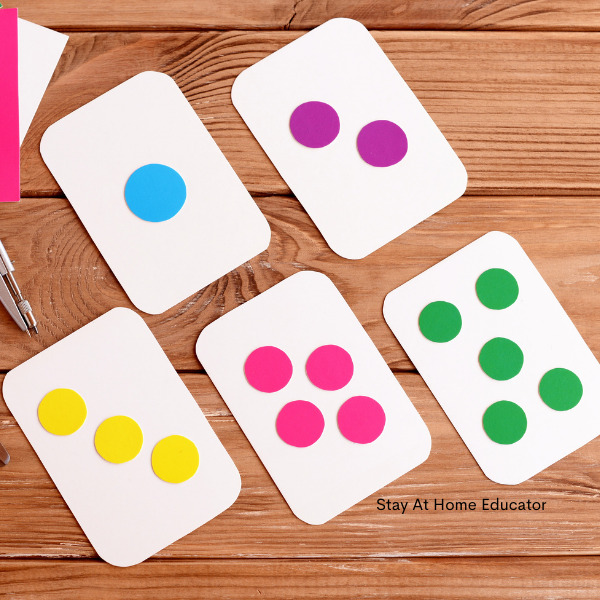
Quick Dot Cards
- Use colored dot stickers to make a set of cards with a set number of dots on each card.
- For beginners, dots should follow the most easily recognized pattern, like the pattern of pips on dice.
- Select a card and flash it before the children for no more than three seconds.
- The goal is to recognize the set as quickly as possible without having to actually count.
Quick Dot Images Look Alike
- Play the same activity as above, but instead of children calling out the numbers, have them use manipulatives to create the same set on a tray or table.
Quick Dot Concentration
- Make a double set of cards and have students play the matching game concentration.
- If playing with young children, such as preschoolers through first grade, consider using number sets up to three, but in multiple color sets.
- This way, the students gets lots of practice with the smaller numbers without getting too frustrated with trying to differentiate the larger sets.
- Once near mastery is evident, larger numbers can be added, as well as less familiar configurations.
Dot Cards Missing Number
- Line up a set of three dot cards with quantities on a tray, all facing down.
- Flash each card to the children for three second each, one at a time.
- Turn over two of the cards and name the quantities as quickly as possible.
- Flash the last card for no more than three seconds and have the children identify the quantity.
Printables for Teaching Subitizing
Apple Drop Counting teaches preschoolers about composing ten, as well as subitizing.
Valentine’s Subitizing and Graphing Game is always a crowd pleaser. It targets subitizing, but also include skill work in number identification, counting, and graphing.
-
Product on sale
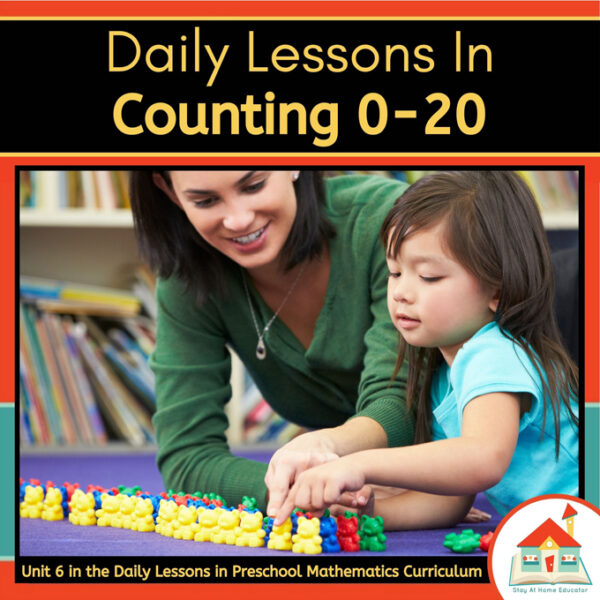 * Daily Lessons in Counting Preschool Math Unit BundleOriginal price was: $48.00.$39.00Current price is: $39.00.
* Daily Lessons in Counting Preschool Math Unit BundleOriginal price was: $48.00.$39.00Current price is: $39.00.
Tips for Teaching Subitizing
Making teaching kindergarten subitizing and preschool number sense easier with these helpful tips.
- Start with small numbers, nothing higher than five or six.
- Use subitizing cards and practice them for a few minutes daily. Just add it to your morning preschool routine.
- Play math games that require traditional dice. Add dice games to your preschool math centers.
- Practice subitizing on five frames and ten frames.
- Use a variety of materials including dot cards, playing cards, tally marks, dice, five and ten frames, etc.
- Use number talks.
Fun Videos for Teaching Preschoolers to Subitize
Sometimes, adding video to our number sense lesson plans is a fun way to keep preschoolers engaged. Here are some of our favorite YouTube videos that teach preschoolers about quantification.

I’m Sarah, an educator turned stay-at-home-mama of five! I’m the owner and creator of Stay At Home Educator, a website about intentional teaching and purposeful learning in the early childhood years. I’ve taught a range of levels, from preschool to college and a little bit of everything in between. Right now my focus is teaching my children and running a preschool from my home. Credentials include: Bachelors in Art, Masters in Curriculum and Instruction.
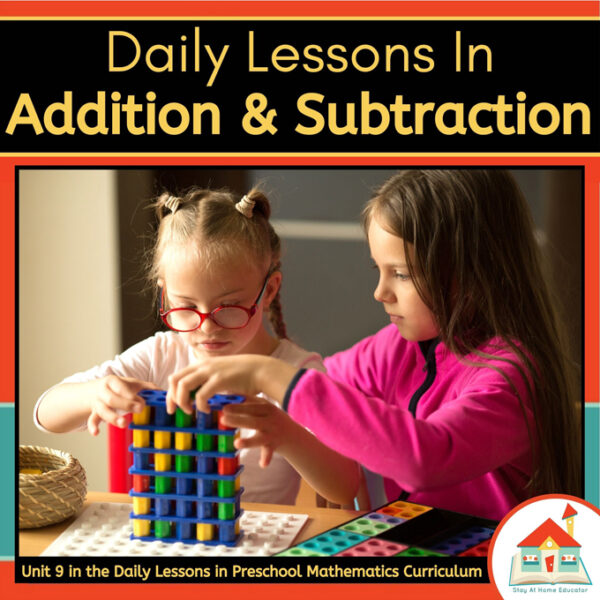

[…] Use these cards for subitizing practice. […]